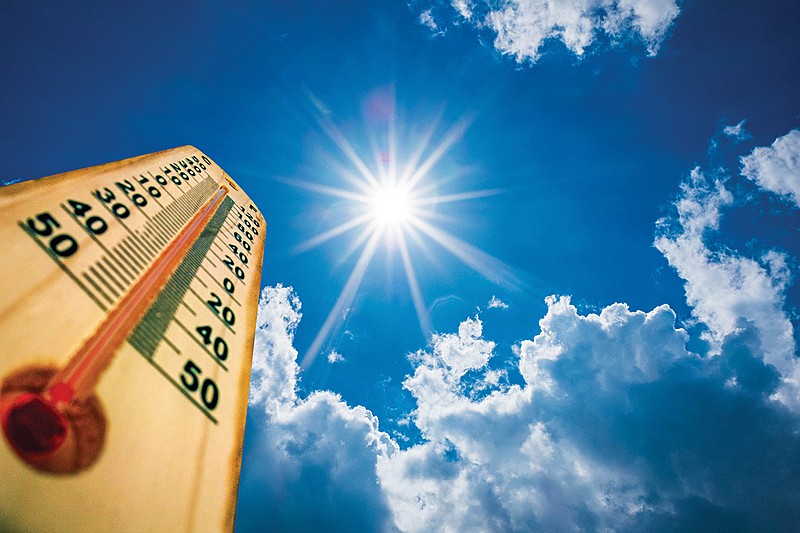Summer is here and with it a rising potential for people in the area to be affected by heat-related illnesses ranging from heat cramps to heat stroke.
"With humidity being nearly 100 percent and the temperature in the mid-80s, it puts us close to 105 degree heat index," said Dr. Matt Young, emergency room physician and medical director/physician owner of Texarkana Emergency Center. "It's difficult for the population to acclimate when the heat comes on quickly. When it comes on that sudden it makes all of us, those who are healthy and those with medical conditions, more susceptible to heat-related illness."
Heat cramps are the mildest form heat-related illness. Symptoms include flushed, moist skin, cramping and spasms after intense exercise.
"That doesn't necessarily mean running a marathon. It could happen after someone mows their yard or works in their garden if they're not used to it," Young said.
The next stage is heat exhaustion. People experiencing this condition will have muscle cramps, pale, moist skin, nausea or vomiting, fatigue and weakness.
For both heat cramps and heat exhaustion, the treatment is the same.
"The best thing is to stop the activity. Move to a cool place to rest. Try to remove excess clothes and drink a sports drink or water and try to rest those muscles. If after a certain amount of time, an hour or so, they haven't improved, they might need to go to the emergency room to get IV fluids and get their electrolytes checked. Most of the time heat exhaustion can be managed outside the hospital but occasionally people need to go in for treatment," he said.
Heat stroke is the most serious condition caused by heat.
"The difference between heat stroke and the other conditions is it causes neurological symptoms like a regular stroke. Symptoms include warm dry skin, a high fever over 104 Fahrenheit, rapid heart rate, nausea and vomiting, headache, fatigue. Then comes on the stroke part. They may have confusion, agitation or be extremely lethargic. The confusion can continue into seizures, coma and unfortunately possibly death," Young said.
Heat stroke is a medical emergency.
"Treatment of that is to stop activity. Move the person to a cool place and call 9-1-1 or get them to a local emergency department. Many times, if it's true heat stroke they're calling 9-1-1 because the person has passed out. It's a true health emergency. You may remove clothes and place ice bags around their body. They may not be able to tolerate oral intake of fluids. Unfortunately, our area sees one or two of these a year that can be deadly. In the past 20 years, we have seen deaths unfortunately secondary to heat strokes."
Prevention is key.
"Prevention is the message we want to emphasize.
Keys to preventing heat illness include making sure to hydrate well with water or sports drinks before outdoor activity, especially on hot days and avoid alcohol and caffeine which can cause dehydration.
"Try to avoid direct sunlight in the heat of the day during your activity," he said. "It's always wise to get up early in the morning or go out later in the evening to do activities. Wear light-colored, light-weight, loose-fitted clothing and take frequent breaks. Don't push yourself when you start feeling thirsty or light-headed."

